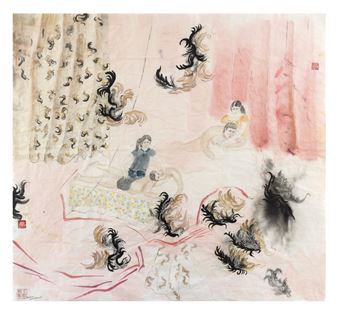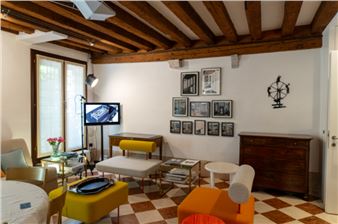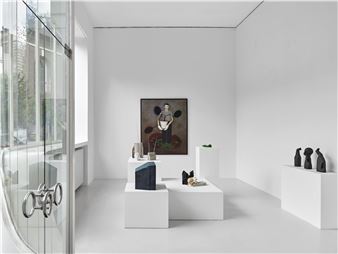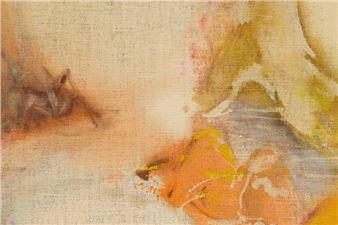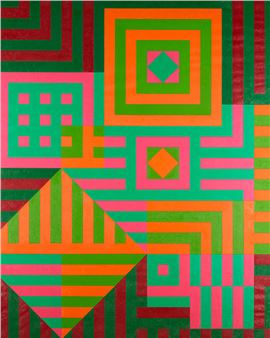Michal Budny: The Song of Skull
For Michał Budny, the skull is a resonator – a kind of tuning fork, or a storage device or receiver for different vibrations. As with an empty shell, there is always a swooshing sound to be heard. Because the eyes are missing, it must rely on other senses – primarily rhythms and sounds that form different layers in its interior, where they create an impalpable image before the eyes of the soul.
Budny’s works present not just new possibilities of perception, but also fleeting transparencies and unstable processes of sensation. They can take the shape of pictures or spatial installations, and they can incorporate shifting light and shadows. For his latest exhibition, the rooms have been given the names “Hymne auf den Weg” (Hymn to the Path), “Hymne auf das Zuhause” (Hymn to the Home), “Hymne auf den Anfang” (Hymn to the Beginning), indicating that his works are tonal arrangements offering praise. However, the object of this praise remains just out of reach and in a permanent state of transition within the resonance chamber of the skull. The abstract objects – regardless of whether they are made of paper, cardboard, wood, or metal – serve as mere clues and refuse all clarity. With their seductive ease and formal austerity, they induct inner oscillations, their sparse, seemingly unexpressive materiality essentially defining their presence.
In The Song of Skull, Budny’s works are organisms with mutually connected parts with a delicate, half-material existence, seeming to lead their own inaccessible lives. When relating to the beholder in the room, however, they act as a potential spark that can activate loops of memories, both familiar and strange.
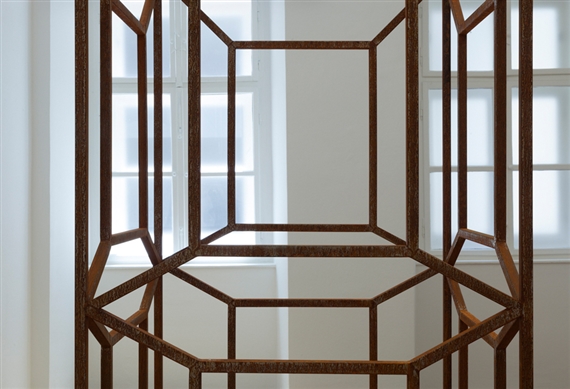
Recommended for you
For Michał Budny, the skull is a resonator – a kind of tuning fork, or a storage device or receiver for different vibrations. As with an empty shell, there is always a swooshing sound to be heard. Because the eyes are missing, it must rely on other senses – primarily rhythms and sounds that form different layers in its interior, where they create an impalpable image before the eyes of the soul.
Budny’s works present not just new possibilities of perception, but also fleeting transparencies and unstable processes of sensation. They can take the shape of pictures or spatial installations, and they can incorporate shifting light and shadows. For his latest exhibition, the rooms have been given the names “Hymne auf den Weg” (Hymn to the Path), “Hymne auf das Zuhause” (Hymn to the Home), “Hymne auf den Anfang” (Hymn to the Beginning), indicating that his works are tonal arrangements offering praise. However, the object of this praise remains just out of reach and in a permanent state of transition within the resonance chamber of the skull. The abstract objects – regardless of whether they are made of paper, cardboard, wood, or metal – serve as mere clues and refuse all clarity. With their seductive ease and formal austerity, they induct inner oscillations, their sparse, seemingly unexpressive materiality essentially defining their presence.
In The Song of Skull, Budny’s works are organisms with mutually connected parts with a delicate, half-material existence, seeming to lead their own inaccessible lives. When relating to the beholder in the room, however, they act as a potential spark that can activate loops of memories, both familiar and strange.

 ARTISTS
ARTISTS








